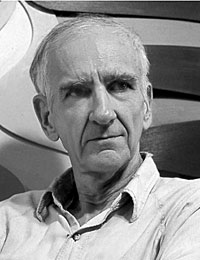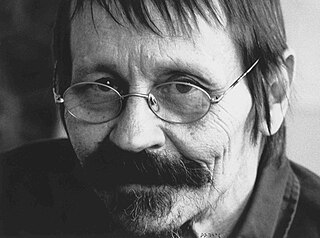Related Research Articles

Drawing is a form of visual art in which an artist uses instruments to mark paper or other two-dimensional surface. Drawing instruments include graphite pencils, pen and ink, various kinds of paints, inked brushes, colored pencils, crayons, charcoal, chalk, pastels, erasers, markers, styluses, and metals. Digital drawing is the act of drawing on graphics software in a computer. Common methods of digital drawing include a stylus or finger on a touchscreen device, stylus- or finger-to-touchpad, or in some cases, a mouse. There are many digital art programs and devices.

Georges Braque was a major 20th-century French painter, collagist, draughtsman, printmaker and sculptor. His most notable contributions were in his alliance with Fauvism from 1905, and the role he played in the development of Cubism. Braque's work between 1908 and 1912 is closely associated with that of his colleague Pablo Picasso. Their respective Cubist works were indistinguishable for many years, yet the quiet nature of Braque was partially eclipsed by the fame and notoriety of Picasso.

Roy Fox Lichtenstein was an American pop artist. During the 1960s, along with Andy Warhol, Jasper Johns, and James Rosenquist among others, he became a leading figure in the new art movement. His work defined the premise of pop art through parody. Inspired by the comic strip, Lichtenstein produced precise compositions that documented while they parodied, often in a tongue-in-cheek manner. His work was influenced by popular advertising and the comic book style. His artwork was considered to be "disruptive". He described pop art as "not 'American' painting but actually industrial painting". His paintings were exhibited at the Leo Castelli Gallery in New York City.

Milton Ernest "Robert" Rauschenberg was an American painter and graphic artist whose early works anticipated the Pop art movement. Rauschenberg is well known for his Combines (1954–1964), a group of artworks which incorporated everyday objects as art materials and which blurred the distinctions between painting and sculpture. Rauschenberg was both a painter and a sculptor, but he also worked with photography, printmaking, papermaking and performance.

Robert L. Williams, often styled Robt. Williams, is an American painter, cartoonist, and founder of Juxtapoz Art & Culture Magazine. Williams was one of the group of artists who produced Zap Comix, along with other underground cartoonists, such as Robert Crumb, S. Clay Wilson, and Gilbert Shelton. His mix of California car culture, cinematic apocalypticism, and film noir helped to create a new genre of psychedelic imagery.

Thomas K. Wesselmann was an American artist associated with the Pop Art movement who worked in painting, collage and sculpture.

Lowbrow, or lowbrow art, is an underground visual art movement that arose in the Los Angeles, California area in the late 1960s. It is a populist art movement with its cultural roots in underground comix, punk music, tiki culture, graffiti, and hot-rod cultures of the street. It is also often known by the name pop surrealism. Lowbrow art often has a sense of humor – sometimes the humor is gleeful, impish, or a sarcastic comment.

Todd Schorr is an American artist and member of the "Lowbrow" art movement or pop surrealism. Combining a cartoon influenced visual vocabulary with a highly polished technical ability, based on the exacting painting methods of the Old Masters, Schorr weaves intricate narratives that are often biting yet humorous in their commentary on the human condition.
Joe Goode is an American artist who attended the Chouinard Art Institute in Los Angeles from 1959–1961. Originally born in Oklahoma City, Oklahoma, Goode made a name for himself in Los Angeles through his cloud imagery and milk bottle paintings which were associated with the Pop Art movement. The artist is also closely associated with Light and Space, a West coast movement of the early 1960s. He currently creates and resides in Los Angeles, California.

Painting is the practice of applying paint, pigment, color or other medium to a solid surface. The medium is commonly applied to the base with a brush, but other implements, such as knives, sponges, and airbrushes, can be used.

Jeffrey A. Gibson is an American Mississippi Choctaw/Cherokee painter, and sculptor. He has lived and worked in Brooklyn; Hudson, New York; and Germantown, New York.

Grégoire Müller is a contemporary Swiss painter and writer, who lives in La Chaux-de-Fonds, Switzerland. His figurative paintings frequently explore current events and world news as documented on television and in print.

Woman with Flowered Hat is a 1963 pop art painting with Magna on canvas by Roy Lichtenstein. The work is based on a Pablo Picasso portrait of Dora Maar. In May 2013, it sold for a record price for a Lichtenstein work.
Richard Smith, CBE was an English painter and printmaker. Smith produced work in a range of styles, and is credited with extending the field of painting through his shaped, sculptural canvases. A key figure in the British development of Pop Art, Smith was chosen to represent Britain in the 1970 Venice Biennale.
Charles Hinman born 1932 in Syracuse, New York is an Abstract Minimalist painter, notable for creating three-dimensional shaped canvas paintings in the mid-1960s.
Willie Young is a 20th-century American artist. Young is mainly self-taught, and his work has been exhibited alongside other prominent outsider artists, such as Bill Traylor, Nellie Mae Rowe and Thornton Dial. The main body of his work consists of delicately rendered graphite drawings.
Aaron Curry is an American painter and sculptor, with works in the collections of the Museum of Modern Art, the Los Angeles County Museum of Art, the Chicago Museum of Contemporary Art and the San Francisco Museum of Art. His work has been shown at the Lincoln Center for the Performing Arts and the Katonah Museum of Art in New York, at the Musée d'art contemporain de Bordeaux in France, and at the DeCordova Museum and Sculpture Park in Lincoln, Massachusetts.

Diana Shpungin is a Latvian-born American multidisciplinary artist. She is known for her work in drawing, sculpture, installation, performance, video, sound, and hand-drawn pencil animation. Her work explores non-traditional ideas of drawing through sculptural and time-based processes.

Heide Fasnacht is a New York City-based artist who works in sculpture, drawing, painting and installation art. Her work explores states of flux, instability and transformation caused by human action and natural events. Since the mid-1990s, she has been known for sculptures and drawings that recreate momentary phenomena such as sneezes, geysers and demolitions—in sometimes abstract or cartoony form—that are temporally and spatially "frozen" for consideration of their aesthetic, perceptual, social or sensate qualities. In the late 2010s, she has expanded these themes in paintings that examine lost and neglected childhood sites, such as playgrounds and amusement parks. ARTnews critic Ken Shulman has described her work as "chart[ing] the fluid dialogue between second and third dimensions, motion and inertia, creation and ruin."
References
- ↑ Virus, The Dark Side of Entertainment, Issue No.17., June–July 2007.
- 1 2 3 Hey! Modern Art & Pop Culture, Issue No.12., December 2012.
- 1 2 Weirdo Noir, Gothic and Dark Lowbrow Art, Matt Dukes Jordan, Chronicle Books, 2010.
- 1 2 JasonD'Aquino: Old Possum and the Fantasticals, Michael J. Beam, TopSpin, 2011.
- ↑ Red Truck Gallery : Jason D'Aquino
- ↑ Tattoo Revue, Issue No.130., September 2007.
- ↑ Jason D'Aquino's Circus ABC, Read Leaf, 2010.
- ↑ Rue Morgue: Horror in Culture & Entertainment, Issue No.67, May 2007.
- ↑ Huffington Post : Jason D'Aquino's Matchbook Drawings: Artist Creates Miniature Homages To Pop Culture
- ↑ International Tattoo Art, November 2004.